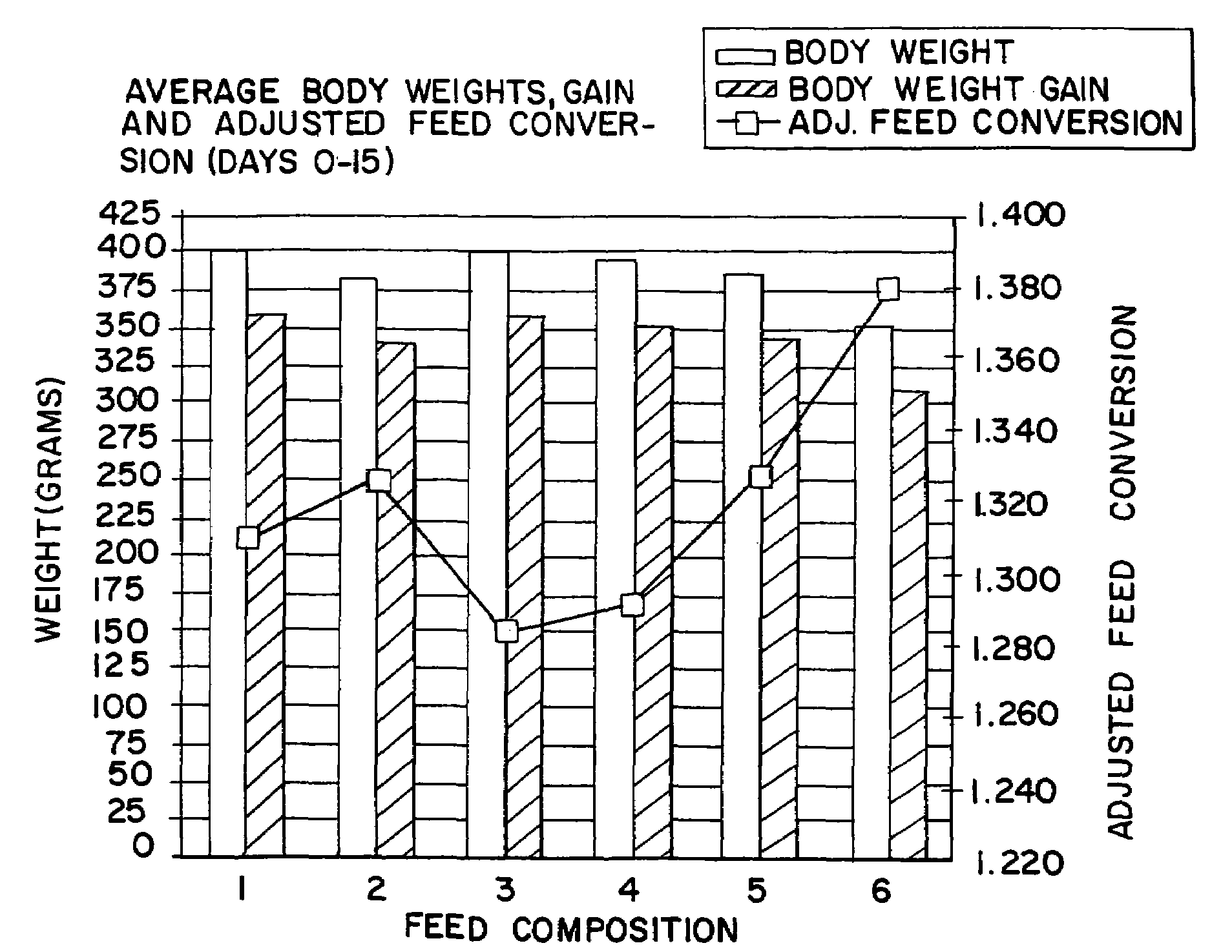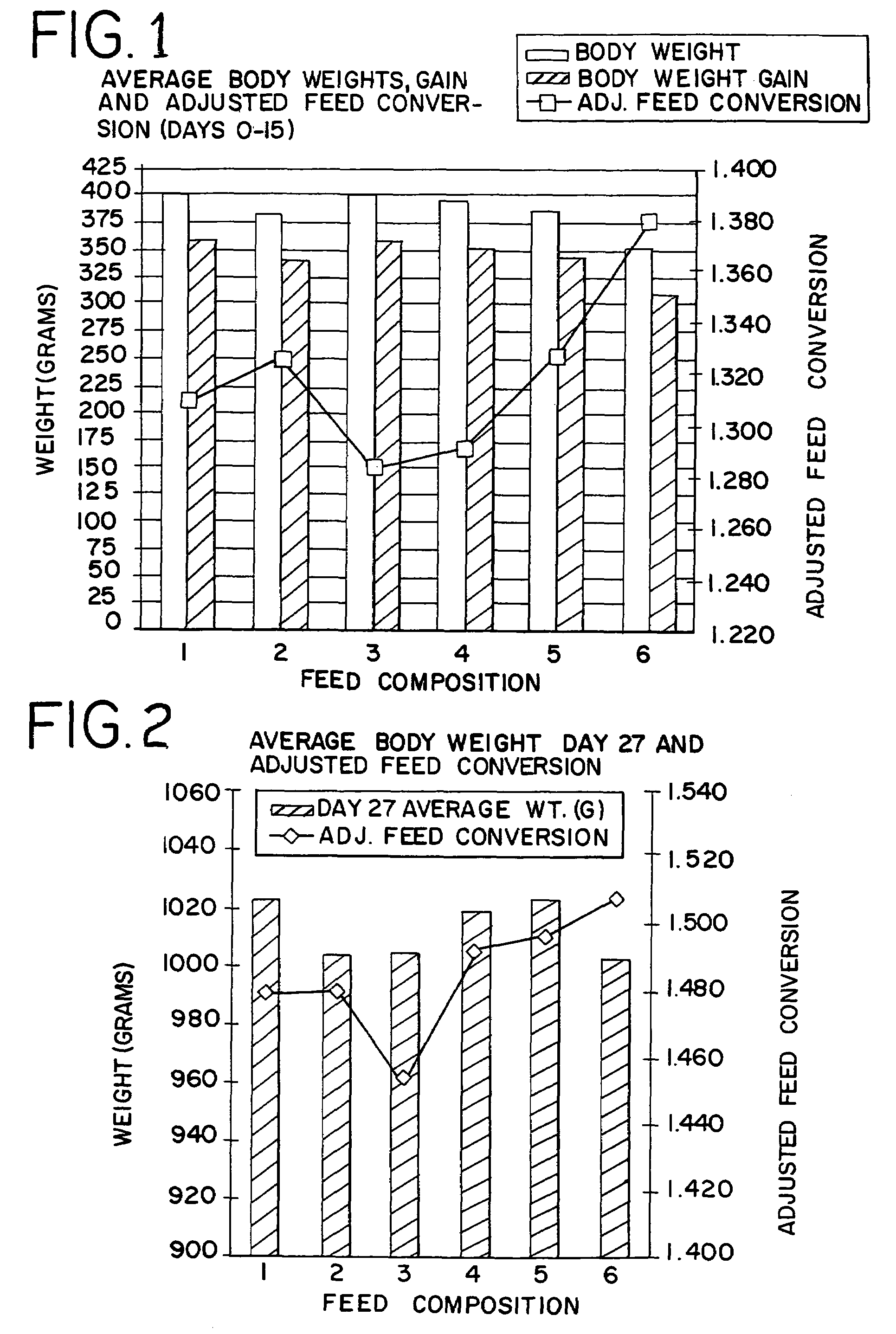Commercial poultry breeder citrus byproduct feed supplement and method
a citrus byproduct and poultry breeder technology, applied in the field of commercial poultry breeder facilities' feed supplements, can solve the problems of reducing operation efficiency, increasing costs, and reducing mating behavior, and achieves the effect of favorable binding ammonia, convenient and inexpensive availability
- Summary
- Abstract
- Description
- Claims
- Application Information
AI Technical Summary
Benefits of technology
Problems solved by technology
Method used
Image
Examples
example 1
[0062]Dried citrus peel is used as a dietary supplement for improving adult bird health and performance in egg production operations typical of poultry breeder production facilities. Pelletized citrus byproduct as described herein is ground and added to the feed at a level of 8 pounds of ground citrus byproduct per ton of feed. Chicks are fed this diet through to between about 21 and 25 weeks of maturity until reaching the pullet phase. This is followed by a 35 week hatch phase, during which bird performance is observed. This feed treatment is for improvement in cardiovascular health and general fitness and for improved egg production of the hens, particularly in the final period of egg laying productivity. This final period is on the order of 8 to 10 weeks. Improvement is also in male health and general fitness for improving mating behavior. Improved mating behavior is for improving the percentage of hatched eggs in the commercial breeder operation. In addition, improved cardiovasc...
example 2
[0066]Chickens are fed feed compositions containing varying levels of citrus peel for a battery cage study protocol over a given time period. The citrus peel is provided as pellets, which are ground using a corn grinder. In all but the control, this ground peel is mixed with the basal feed having an approximate nutrient composition of 6.0 percent protein, 2.0 percent fat, 16.6 percent fiber and 3.0 percent calcium. The diets are fed ad libitum for days 0 through 15 for each diet composition. No other feed additives are included in the diets.
[0067]The feed compositions are as follows: Composition 1 is the control, having no citrus supplement added thereto. Feed Composition 2 has 4 pounds per ton of a supplement of the citrus peel blended thereinto. Composition 3 has 16 pounds per ton of the citrus feed supplement added thereto. Composition 4 has 32 pounds per ton of the ground citrus material added to it. Composition 5 has 64 pounds per ton of the ground citrus material added to it. ...
example 3
[0072]A battery cage study is conducted with poultry as generally discussed in Example 2 and with a protocol substantially as discussed in Example 2. Here, the study lasts for 27 days, and the diets differ from those of Example 2 in the following respects. Composition 1 continues to be the control feed having no added citrus supplement. Composition 2 added 8 pounds per ton (0.4 weight percent) of the ground citrus byproduct described in Example 3. Each of feed Compositions 3, 4 and 5 are supplemented with isolated and purified compounds which are found in citrus peel byproduct. Composition 6 contains a supplement which is a combination of these three chemical compounds. Each of the compositions is formulated so that the respective feeds were isocaloric.
[0073]More particularly, Composition 3 contains 104 ppm of hesperidin. Composition 4 contains 4.3 ppm of limonin glucoside. Composition 5 contains 0.12 weight percent of citrus pectin, based on the total weight of this feed compositio...
PUM
 Login to View More
Login to View More Abstract
Description
Claims
Application Information
 Login to View More
Login to View More - R&D
- Intellectual Property
- Life Sciences
- Materials
- Tech Scout
- Unparalleled Data Quality
- Higher Quality Content
- 60% Fewer Hallucinations
Browse by: Latest US Patents, China's latest patents, Technical Efficacy Thesaurus, Application Domain, Technology Topic, Popular Technical Reports.
© 2025 PatSnap. All rights reserved.Legal|Privacy policy|Modern Slavery Act Transparency Statement|Sitemap|About US| Contact US: help@patsnap.com


